
KURDISH
ANTIQUE & NEW
HANDIWORK PIECES
Kurdish art culture dates back to the Prehistoric Era

Kurdish art culture dates back to the prehistoric era
Kurdish art after Islam was attributed by Arab occupiers to the Arabs due to Arabization under the cover of religion (Islam).
Kurdish art before Islam was atributed to other peoples by the Christian racist European archaeologists/Asyrologists and narrow-minded and racist European explorers.
The typical attitude of these narrow-minded European explorers was: "they are wild and therefore not worth studying" But what they didn't know was
that the Kurds were passionate freedom and art lovers and that there were even available Kurdish cultural historical objects from the Neolithic era
The Christian European archaeologists and explorers single-mindedly sided with the Assyrians and attributed everything they found in the excavations
in the Middle East to the Christian Assyrians of their time. At that time, a big majority of the Kurds were Muslims.
Handiwork Art Pieces - Hand-Knotted Kurdish HANGING CRADLE
Handiwork Art Pieces - BELLY BELT
Handiwork Art Pieces - BABY BACKS
Handiwork Art Pieces - CUPS
Handiwork Pieces - COFEE POT
Kurdish Handiwork Pieces - DAGGERS
Handiwork Pieces - DOOR HANGING
Handiwork Art Pieces - EMBROIDER RUG PILLOWS
Handiwork GLASS PENDANT
Hand Woven HORSE NOSE & NECK SUMAC KILIM BAND
Hand Wowen Kurdish JUDAICA KILIM
Hand Woven - KURDISH NOMAD GIRL ON CARPET
Antique Spoon - LURISTANI KURDISH SPOON
Handiwork - NOMAD KILIM RUGS
Fringed Kurdish - PENDANT NECKLAGE
Nomad SALT BAG
Handiwork Pieces - SHOES
Handiwork Pieces - SILVER NECKLES
Traditional Hand Knitted SKULL CUP
Handiwork Art Pieces - SPOONBAG SET
Handiwork Pieces - TOMBAK
Handiwork TRIBAL RUG BAGS
Handiwork Art Piece Tribal PENDANT
| ''Kürdler turkuaz taşından çok güzel bilezik, taş, kolye ve küpeler yapıyorlar. Kürd madenciler dağların yamacında çekiçler kullanarak bu madeni elde ediyor.'' Vas Viktor, 1915, Kürtler |
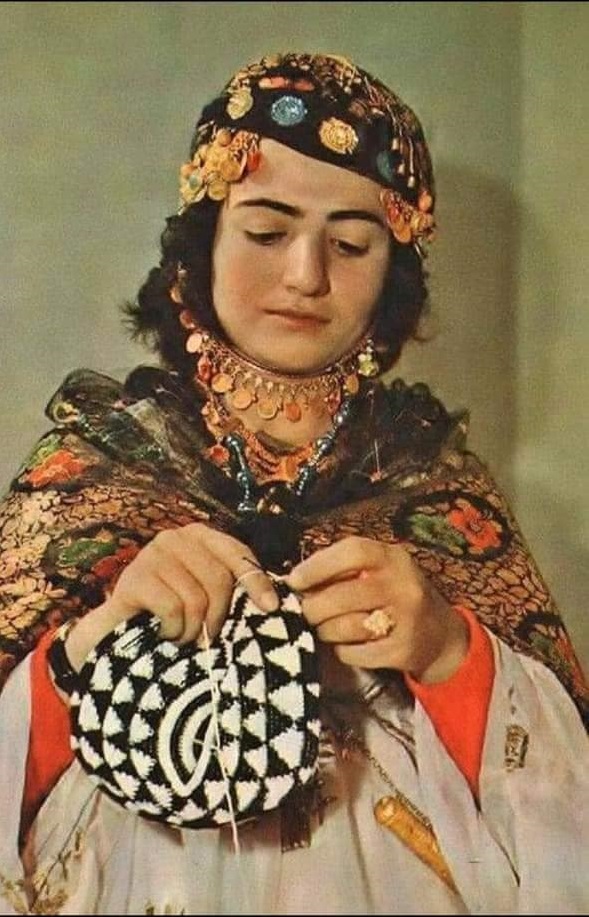
Kurdish women from Suleimani
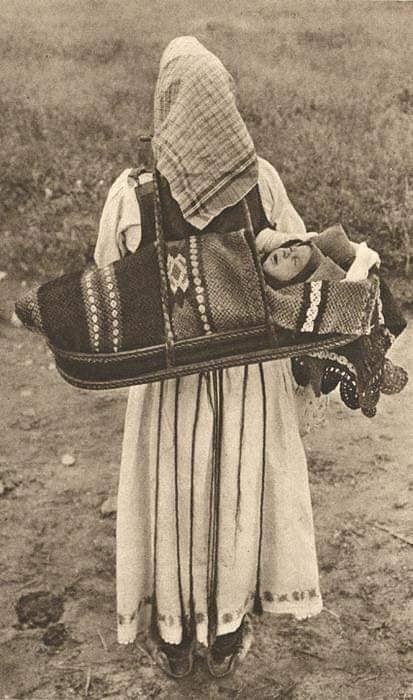

lepikên (destkêş) kurdî
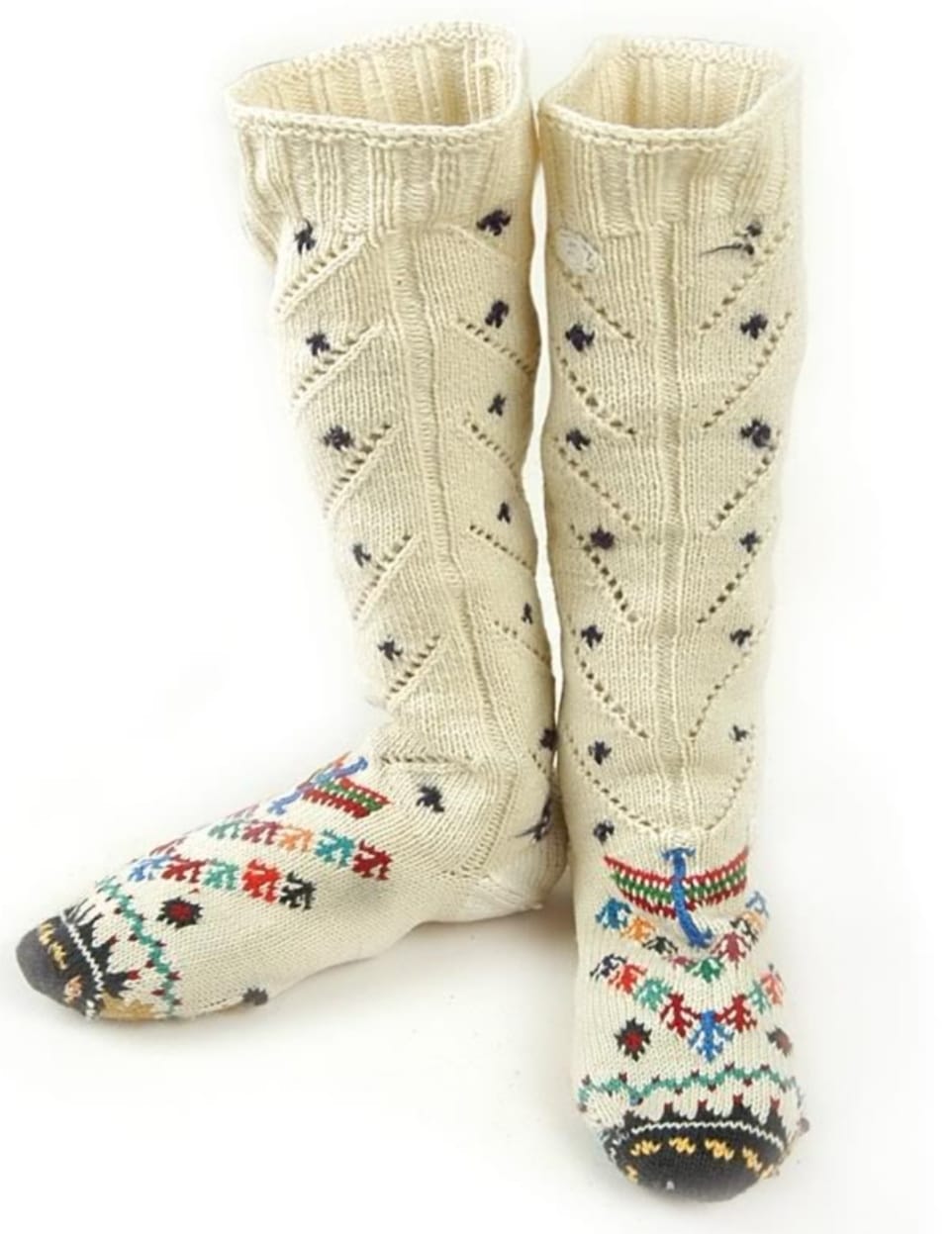
Goreyên zivistanê

Kurdiska kvinnoprydnad från 1915
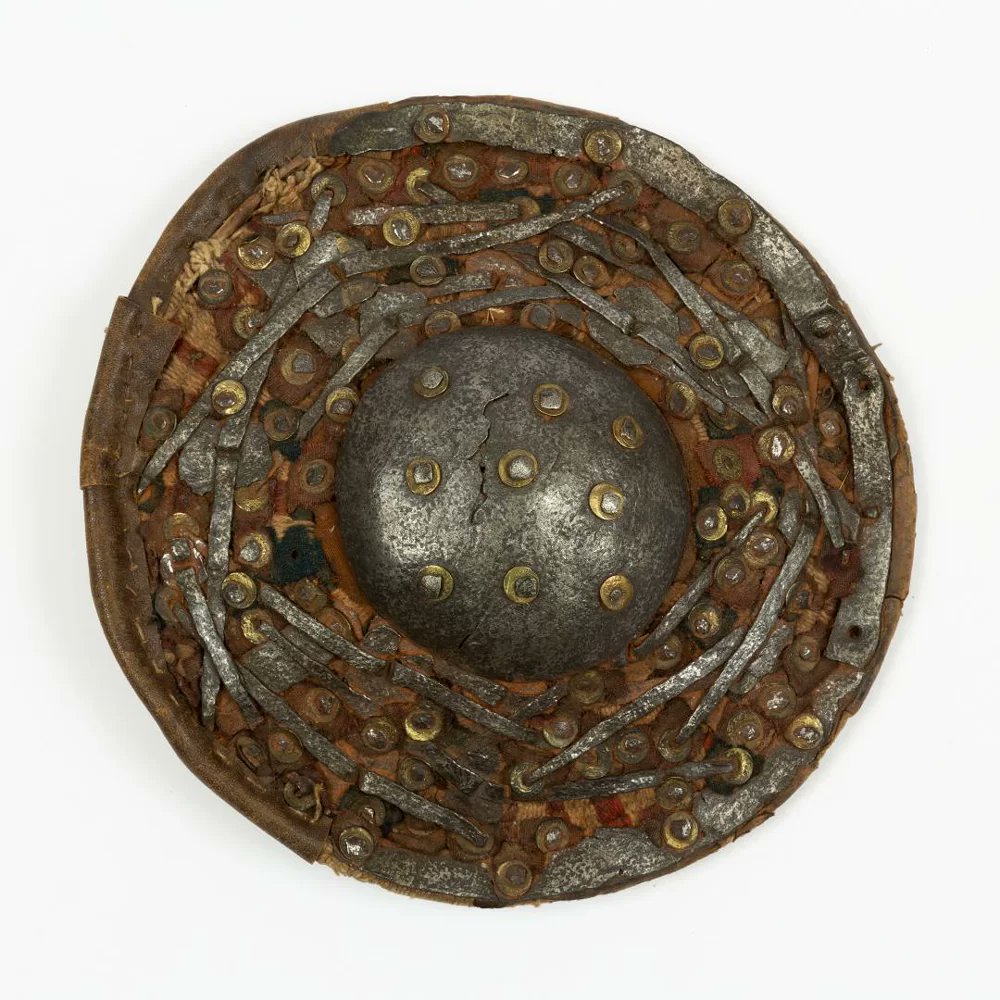
A Kurdish shield (Mertal) used by Kurds of the Caucasus in battle and dating back to the 14th century
From the Russian Ethnographic Museum

Mertalên kurda yên ji sedala 14a
(14. yüzyıldan kalma kürd kalkanları)
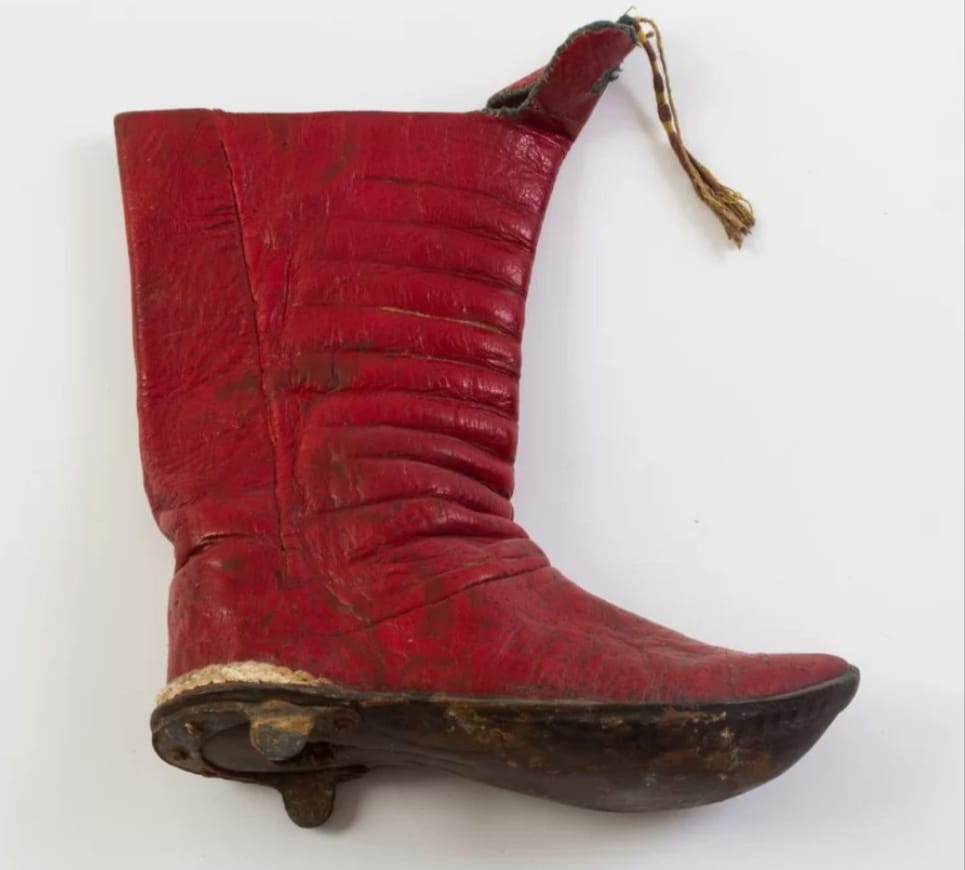
A Kurdish boot dates back to the 19th century and was used by the Kurds of the Caucasus.
From the Russian Ethnographic Museum:
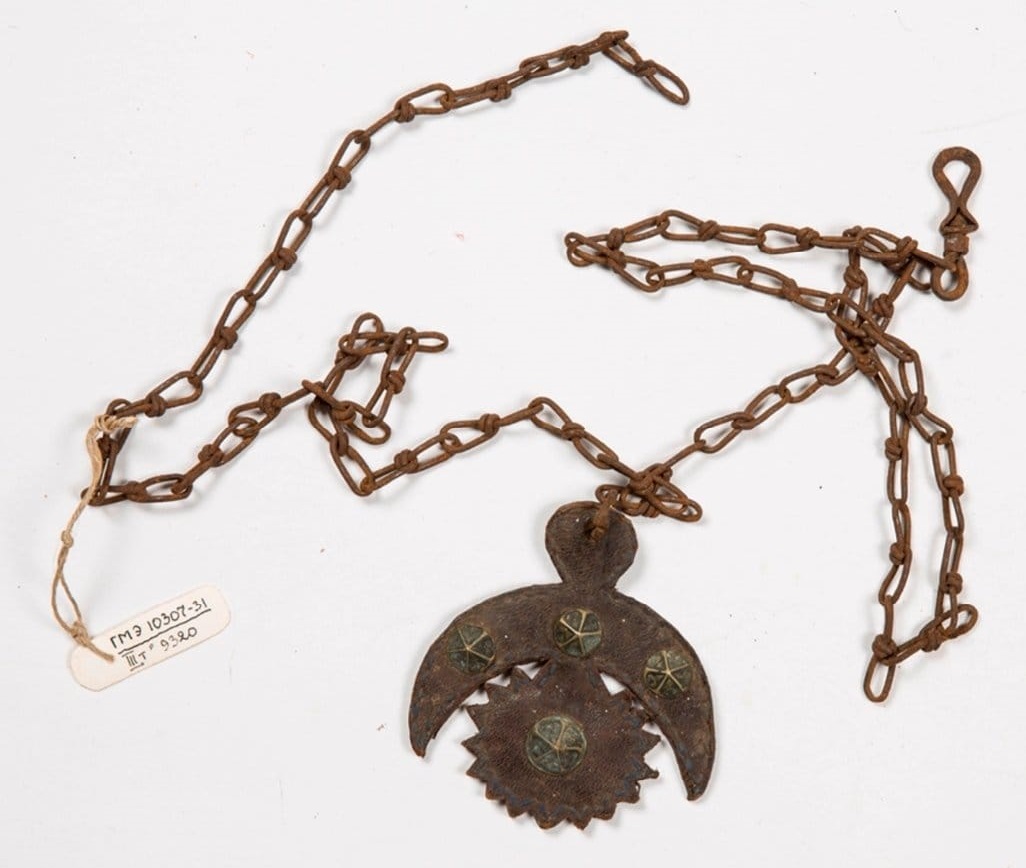
Mascot dating back to the beginning of the last century as the Kurds put it around the necks of their horses
Russian Ethnographic Museum:
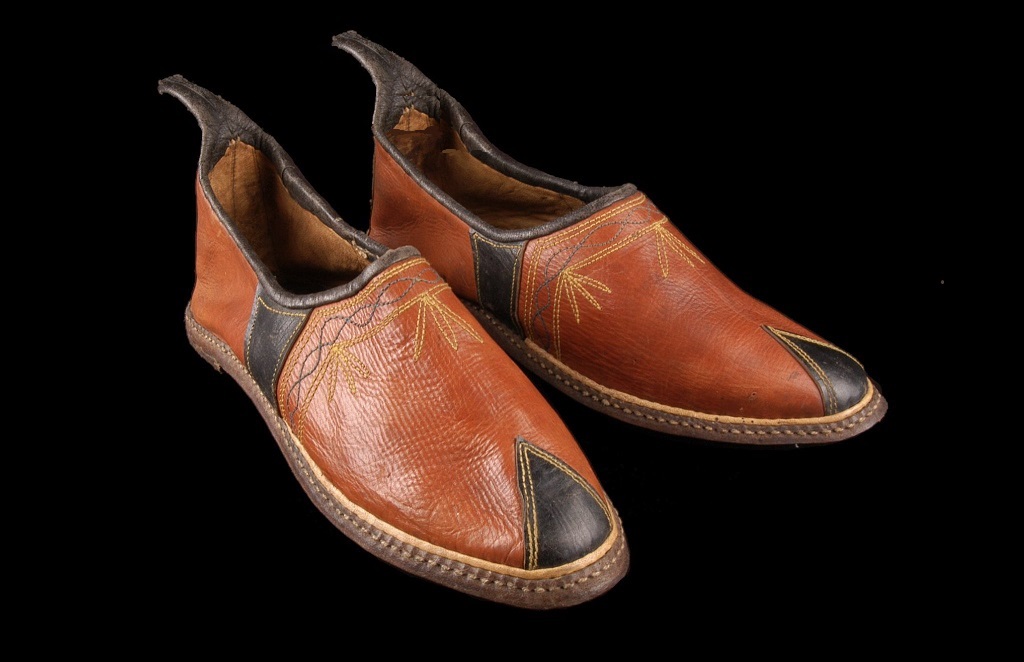
1935 besökte den franske underrättelseofficeren - Pierre Rondot den kurdiska klanen Hassanan och klanen Hassanan - honom dessa skor, men han använde dem inte mycket. Innan sin död donerade han dem till ett franskt museum:
Kommentar: Franske generalen Pierre Rondot var specialist på Mellanöstern och kurdiska frågor, han har dussintals studier om kurder, han var fransk underrättelseofficer i Syrien och Libanon under den franska utplaceringen och han var vän med de kurdiska prinserna Jaladat Baderkhan och Kamuran Badrkhan. Han dog år 2000
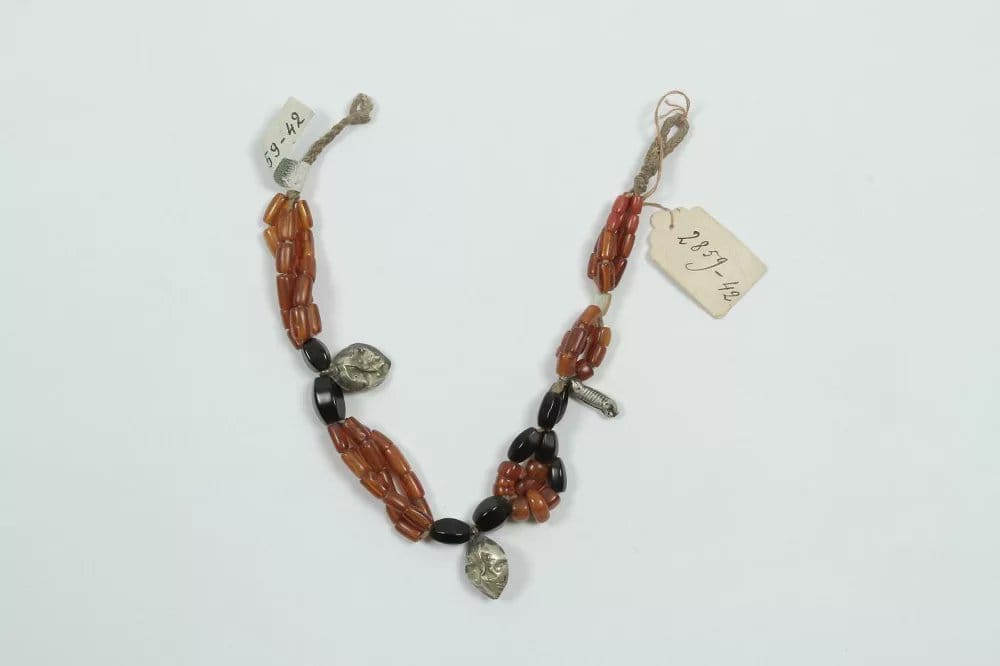
An antique Kurdish women's necklace
Kumaşı ve renkli kumaşı ilk icad eden moda öncüsüydü de.. 1852
Kürdler, sanat, ilim, irfan, edebiyat, ahlak, medeniyet konusunda en önde idiler. İşte ispatı bu sayfada duruyor.
Ama kürdlerin islamcı liderleri kürdlerin özgürlüğünü ümmet denilen işgalci, ırkçı ve inkarcı islamist vahşete
ipotek ettirdiler. Böylelikle kürdler bugün yukarıda sayılan bütün o erdemlerin en gerisine düşürüldü.
Çünkü kürdlerin herşeyi olan vatanları kürdlerin ellerinden alınmıştır. Vatan, yani herşey elden alınmışsa işte o zaman bütün bu erdem ve faziletlerin yoksunu olmak demektir.

Parts of a Kurdish chess set preserved at the Archaeological Museum of the University of Pennsylvania.
The image was published in the book Chess and Playing-Cards, released in 1898.
The book includes a special section dedicated to Kurdish chess.
Delar av kurdisk schack som finns bevarade på Arkeologiska museet vid University of Pennsylvania.
Bilden är publicerad i boken Chessand Playing-Card, utgiven 1898.
I den omtalade boken finns en specialklass om kurdisk schack.

Say Dera Kvinnodräkt, Qers


En dekorativ kopparvas fran 1200 talet e.Kr tillverkadesi Damaskus för- den kurdiska hirskaren den rittfardige kungen Najmuddin Ayub som dog 1249

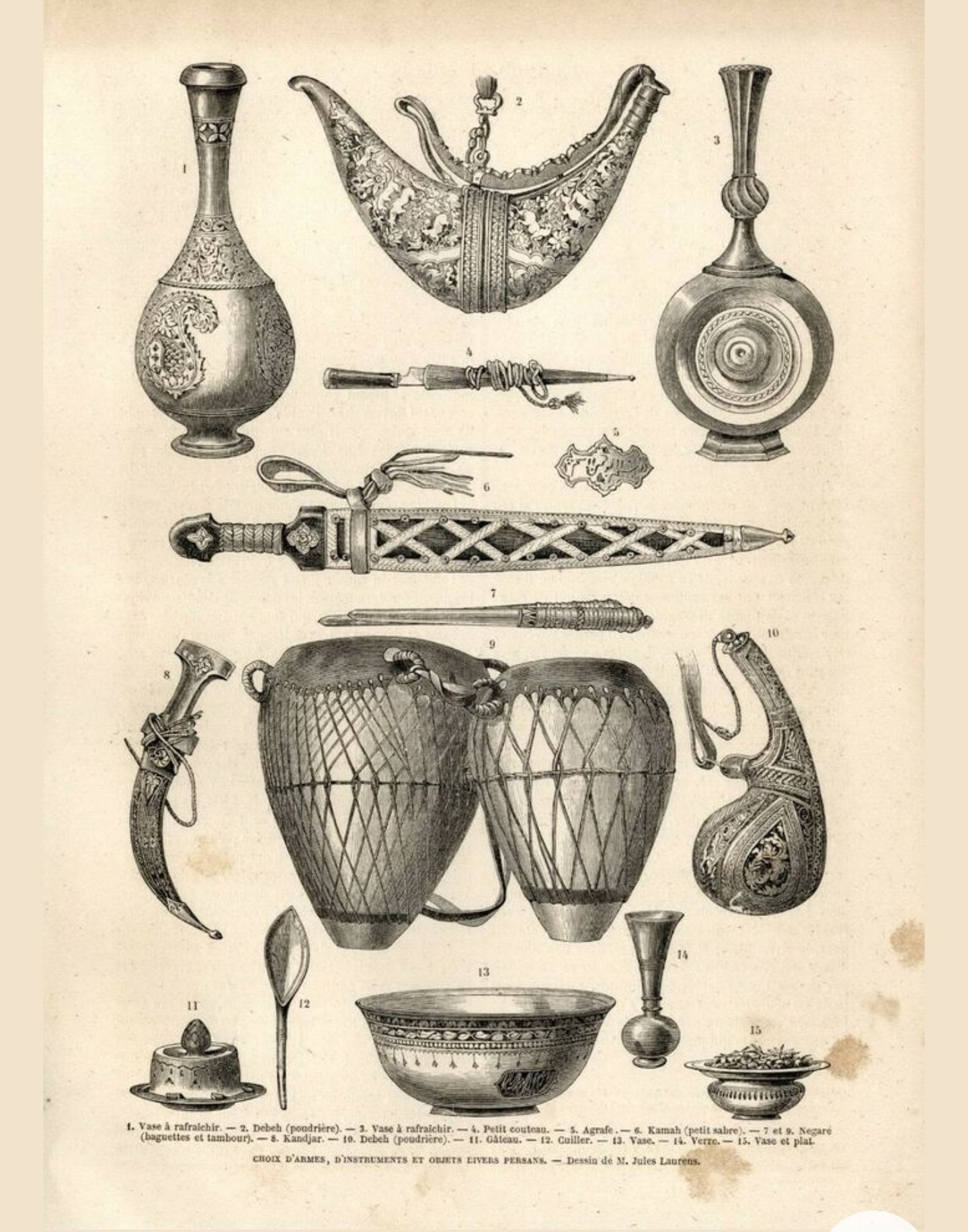
Gerokê Fransî amûrên di nav malên kurdan de, nexşandiye, 1847.
(J. Laurens)

Çend b erhemên kurdî yên destî, yên nû, Diyarbekir û Dilûk'ê
Kurdish New Handiwork Objeckts Diyarbekir and Dilûk
(Yeni kürd elişi sanatı, Diyarbekir ve Dilûk )
JI BO PARASTINA BERHEMÊN HUNERA DESTÎ YA KURDÎ ÇALAKIYEKE WATEDAR
Hilberîna (produksiyon, întac) hunera destî, ku jê re bi înglîzî Hand Made dibêjin û li nik gel û milletên din, xwedî nirxeka pirr a payebilind e, lêbelê li welatê me, hunera van berhemên destî êdî rojên xwe yên dawiyê dijîn. Ango mixabin ku bikarhanîna beşek mazin a van hilberînên hunera destî ya li Kurdistanê êdî li ber windabûnê ye.
Ji bo parastina berhemên hunerî yên mêjûyî, ji vê bi salek berê, Sazendeya (weqfa) Pirtûkxane & Muzexaneya Kurdî li Stockholmê hat damezirandin. Damezirenêr û rêvebirê Muzexaneyê Goran Candan, bi kopîkirina yek ji peykerên herî kevin ên cîhanê, ku li encama lêkolînên arkeolojîkî yên li Girê Miradan, li Ruha'yê hatibû dîtin, ji bo mijara parastina berhemên mêjûyî nimûneyek çalakiyê ya berbiçav nîşanî me dabû.
Nuha jî balkişandina ser hilberînên hunerên destî, birêz Goran Candan bi mijareke nuh bi me re ye û pirs eve e:
- Gelo divê em çi bikin da ku em xwedî li berhemên mêjûyî û hunera destî ya kurdî derkevin?
- Berî her tiştî divêt ku em kurd hişyar bin li ser mijara parastinê. Divêt em berhemên ku li Kurdistanê hene, li malên xwe biparêzin ta ku em wan bişînin li nav muzexaneyên Hikûmeta Herêmî ya Kurdistanê ji bo parastinê.
- Tu dibêjî ew ê li wir werin parastinê yan?
- Belê. Ew ê werin parastinê hem jî bi şêweyeke herî baş. Ji ber ku desthilatdariya kurdan heye li wir, loma.
- Van berhemên hunera destî yên li Bakurê Kurdistanê, gelo ji ber çi sedemî winda dibin?
- Ji ber du sedeman: 1: ji ber ku li welatê kurdan şerê taybet dihêt ajotin. 2: Nederketina xwedîtî ya li van berhemên mêjûyî. Ne desthilata kurdan û ne jî şêniyê herêmê xwedî li vê dezgeha mêjûyî derdikevin. Desthilata kurdan a navendî li Bakur nîn e. Desthilatên herêmî yên wek şaredariyên kurdan jî bi gelşên din re xwe mijûl dikin. Li gor beyanatên hunermendên hunerên destî yên li Çarşiya Şewitî ya li Diyarbekrê, rexbeta xelkê, îro roj piranî bo firaq û alavên fabrîkî ''sun’î' yên wek naylon û plastîkî heye. Kes êdî nirxê van firaq û alavên antîkî mixabin ku nizane. Heger çend salên din jî welê berdewam bike, hingê ev dezgeha hunerî ku ji bav û kalan derbasê zarokên malê dibe, wê ji binî ne mîne!
Loma divêt em van firaq alavan û hemû firaq û alavên mêjûyî biparêzin. Ji van berhemên ku hûn li wêneyê dibînin, ji her yekî yek li nav navenda Sazendeya Pirtûkxane û Muzxaneya Kurdî li Stockholmê û li nav Pirtûkxane û Muzexaneya Kurdî li New York’ê dihêt parastinê. Van çend lib nusxeyên nimûne, Goran Candan ji Amedê hanîn û li van ciyên navbirî dan bi parastin. Her wisa jÎ birêz birêz Goran Candan çend ji van berheman şandiye bo Pirtûkxane û Muzexaneya Kurdî ya li New York’ê, ku bi rêberayetiya Dr Vera Baeudin Saeedpoor ve tête meşandin.
21.03.2008
EuroNews

Eski tarîhî devirlerdeki tipik bir kürd köy evi içi dekorasyonu

Teşîrêsên kurd ên mêjûyî
Neolîtîk Devrim'in dili: Kürdçe
Neolitik Devrim'in kavmi: Kürdler
HAYVANCILIK SANATI DEVRİMİ (PASTORAL REVOLUTION) YARATICISI VE ÖNCÜSÜ KÜRDLER -- Hayvanı Evcilleştiren El, Medeniyeti Yaratan Halk
____________
KAYNAKÇA:
KÜRDLERİN EKİM DEVRİMİNDEKİ ÖNCÜ ROLLERİNE DAİR:
M. M. Djakonov (1915–1999), Sovyet tarihçisi ve asuroloji uzmanıdır. Kürdlerin yalnızca buğdayı ilk keşfeden halk olmaları değil, aynı zamanda buğdayı ıslah edip insanlığın başlıca besin kaynağı hâline getirmeleri de dikkat çekicidir. Ancak daha da önemlisi, kürdler komşularının sınırlarını tanıyan ilk uygar halklardan biri olmuşlardır. Bu durum, onların yalnızca teknik ilerlemelerle değil, aynı zamanda toplumsal bir uygarlığın temelleriyle de tarih sahnesine çıktıklarını gösterir.
Djakonov şöyle yazar:
"Kürdler, buğdayı bir bitki olarak keşfetti, onu ıslah etti ve insanlığın temel gıdası haline getirdi. Bu katkı, insanlık tarihine sunulmuş paha biçilmez bir armağandır. Ayrıca kürdler, komşularının haklarını tanıyan ilk halk olmuşlardır – bu durum, günümüze ulaşan antik kil tabletlerde açıkça görülmektedir."
KÜRDLERİN PASTORAL DEVRİMİNDEKİ ÖNCÜ ROLLERİNE DAİR:
"Bereketli Hilal bölgesi eskiden beri tekstil endüstrisiyle ünlü olmuştur. Çin'den ipek, Hindistan'dan pamuk gelmeden önce, bu bölgenin dokumacıları sürekli olarak yüne ihtiyaç duyuyordu ve yün 'kürd' koyunlarından geliyordu. Ön Asya'nın kentlerinde aynı zamanda 'kürd' koyunlarının etine de ihtiyaç vardı. Böylece kürdler, Ön Asya'nın ekonomik yaşamında önemli bir rol oynadılar – hayvan yetiştiricileri olarak. Bu rolü çok erken dönemlerde üstlenmiş olmalılar. Belki de Asurlulara atı ilk tanıtanlar onlardı. Ve at yetiştiriciliğini hâlen belirli ölçüde sürdürmektedirler."
-- Svenning, Carl-Elof, Politisk tidskrift, CUF, Ocak 1964, modern kürd göçebe aşiretleri hakkında. -- Svenning, Carl-Elof. Främre Orienten: Från Babylon till Baghdad. Stockholm: Natur & Kultur, 1982 (ilk baskı: 1944). -- Ferdinand Henner/ Die Kurden (Geschichte des kurdischen Volkes Ferdinand Hennerbichler’in, kürdlerin Kürdistan’da “taş devrinden beri izlenebilen en erken başlangıçtan itibaren” bu bölgede yaşadıkları yönündeki görüşü, 2004 yılında Almanca olarak yayımlanan Die Kurden (Geschichte des kurdischen Volkes) adlı kitabında yer almaktadır isbn-nr.de Bu kitap, Kürd halkının en eski çağlardan günümüze uzanan tarihî kökenlerini kapsayan kapsamlı bir tarih anlatısı sunar. 2004 yılında Mosonmagyaróvár’da A&H Bt. / Edition FHE tarafından yayımlanmıştır. 700 sayfa, 348 fotoğraf, 117 grafik içeren bu çalışma, kurdoloji alanında oldukça dikkat çekici bulunmuştur hennerbichler.info Ayrıca, Hennerbichler 2010 ve 2011 yıllarında daha yeni interdisipliner çalışmalar yayımlamıştır - örneğin: Die Herkunft der Kurden: Interdisziplinäre Studie (2010, Almanca), Peter Lang tarafından yayımlanmıştır The Insight International The Origin of the Kurds (2011, İngilizce), edition winterwork tarafından yayımlanan 390 sayfalık bir interdisipliner çalışmadır |